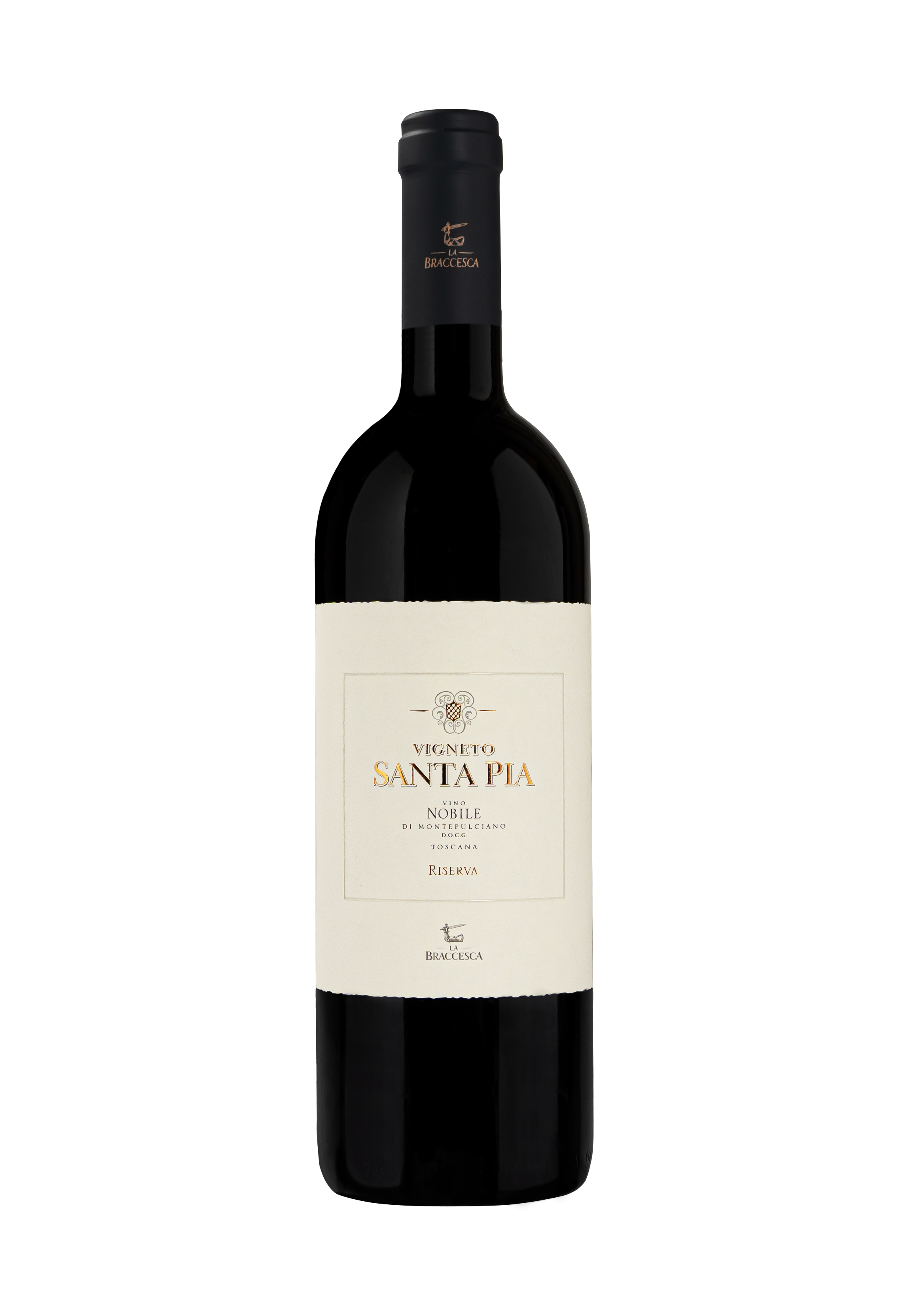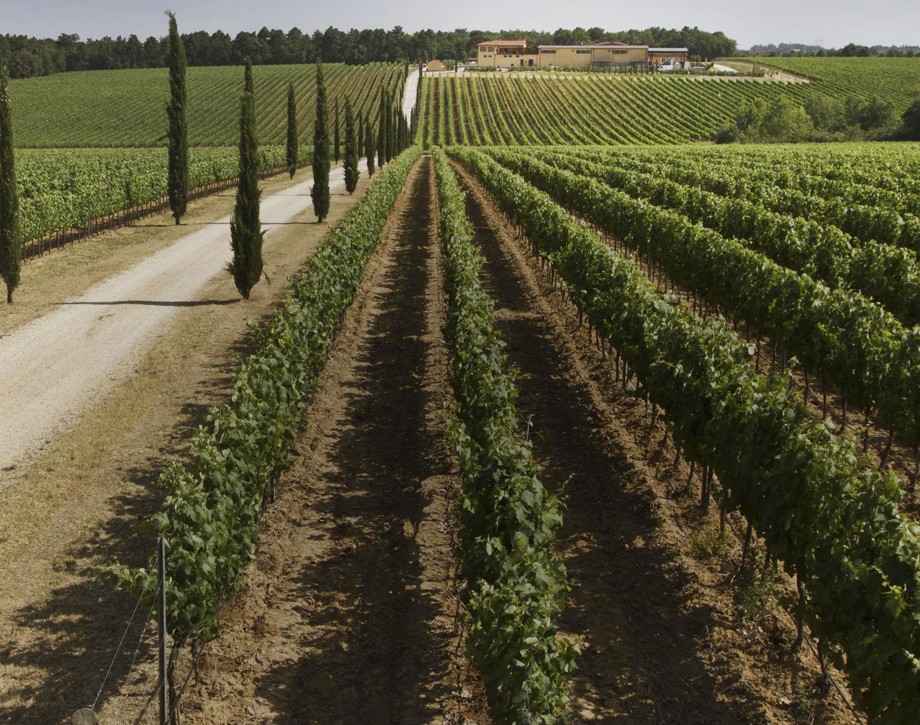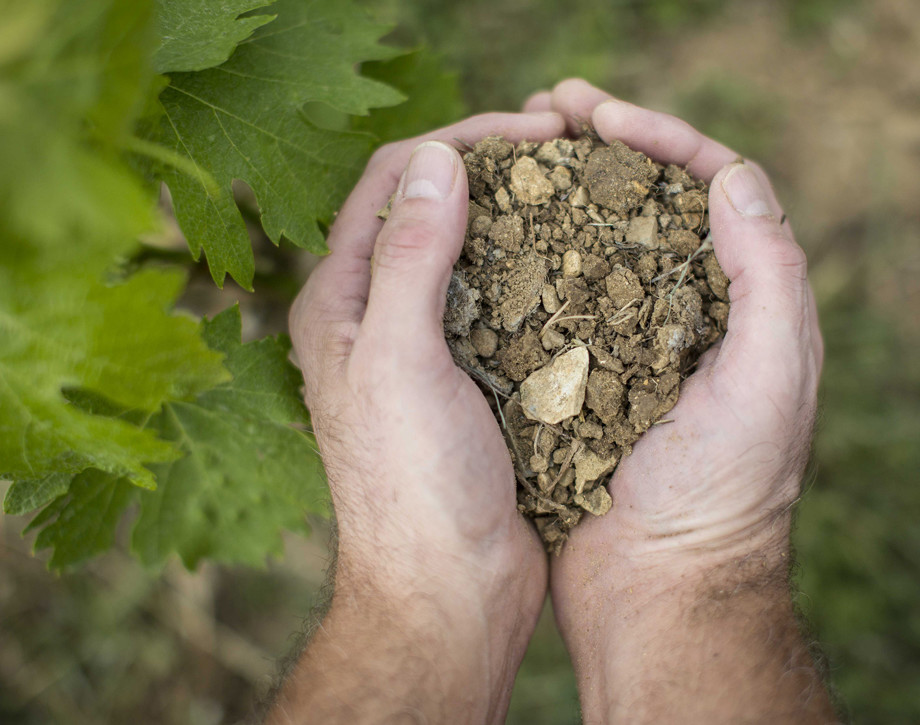Vigneto Santa Pia

Climate
The winter months were characterized by mild temperatures and by abundant rainfall which replenished, after a dry spell, reserves of ground water. During the last ten days of the month of April a sharp rise in temperatures assisted the conclusion of the bud burst of the Sangiovese grapevines. Spring and summer were cool, favoring a regular growth and development of the vines and only slightly delaying the ripening of the grape bunches.
Vinification
The Sangiovese grapes of the Santa Pia vineyard were picked entirely by hand around the middle of the month of October. After the destemming and a soft pressing of the berries, the must went into stainless steel tanks where it fermented at temperatures kept constantly under complete control to fully conserve the typical varietal aromas of Sangiovese. The fermentation lasted for 20 days, after which the wine went into 130 gallon (500 liter) puncheons first for the malolactic fermentation and successively for a twelve month period of aging. The bottling was followed by a 20 month period of bottle aging before commercial release.
Historical Data
The La Braccesca estate covers some 1255 acres (508 hectares) where once were located the holdings of the Bracci counts, who gave their name both to the property and its count of arms: an armor-clad arm holding a sword. The overall vineyard surface consists of 850 acres (340 hectares) and is divided into two blocks: the first, 575 acres (233 hectares) is situated on the border between Montepulciano and the neighboring township of Cortona. The second, instead, 255 acres (103 hectares) insize, arrives close to the city itself and includes three highly renowned sub-zones for the production of outstanding red wine: Cervognano, Santa Pia, and Gracciano. Santa Pia is produced from a 37 acre (15 hectare) vineyard situated in the site of the same name, located the terraces below the town of Montepulciano. Its unique soil, medium in texture and consistence, rich in stones and sand, have assisted the ambition to produce an elegant, but at the same time classic, example of Sangiovese, one capable of transmitting the a highly recognizable expression of this historic production zone. The first year of production of Santa Pia was the 2001.
Tasting Notes
An intense ruby red in color, the wine presents aromas of leather and tobacco along with ripe red fruit and quinine. The palate is savory, full and ample with supple and silky tannins. The finish and aftertaste are long and persistent.
Awards
Wine Spectator 92/100 USA

The Wine
Santa Pia is produced from a 15-hectare (37 acres) vineyard in an area called Santa Pia, located on the ridges just below the town of Montepulciano. This particular area has sandy loamy soils rich in rocky deposits known as “scheletro” that allow the Antinori’s to create an elegant yet traditional expression of the Sangiovese grape that reflects the characteristics of this historic winemaking area. The first vintage to be produced was 2001.

Climate
The winter months were characterized by mild temperatures and by abundant rainfall which replenished, after a dry spell, reserves of ground water. During the last ten days of the month of April a sharp rise in temperatures assisted the conclusion of the bud burst of the Sangiovese grapevines. Spring and summer were cool, favoring a regular growth and development of the vines and only slightly delaying the ripening of the grape bunches.
Vinification
The Sangiovese grapes of the Santa Pia vineyard were picked entirely by hand around the middle of the month of October. After the destemming and a soft pressing of the berries, the must went into stainless steel tanks where it fermented at temperatures kept constantly under complete control to fully conserve the typical varietal aromas of Sangiovese. The fermentation lasted for 20 days, after which the wine went into 130 gallon (500 liter) puncheons first for the malolactic fermentation and successively for a twelve month period of aging. The bottling was followed by a 20 month period of bottle aging before commercial release.
Historical Data
The La Braccesca estate covers some 1255 acres (508 hectares) where once were located the holdings of the Bracci counts, who gave their name both to the property and its count of arms: an armor-clad arm holding a sword. The overall vineyard surface consists of 850 acres (340 hectares) and is divided into two blocks: the first, 575 acres (233 hectares) is situated on the border between Montepulciano and the neighboring township of Cortona. The second, instead, 255 acres (103 hectares) insize, arrives close to the city itself and includes three highly renowned sub-zones for the production of outstanding red wine: Cervognano, Santa Pia, and Gracciano. Santa Pia is produced from a 37 acre (15 hectare) vineyard situated in the site of the same name, located the terraces below the town of Montepulciano. Its unique soil, medium in texture and consistence, rich in stones and sand, have assisted the ambition to produce an elegant, but at the same time classic, example of Sangiovese, one capable of transmitting the a highly recognizable expression of this historic production zone. The first year of production of Santa Pia was the 2001.
Tasting Notes
An intense ruby red in color, the wine presents aromas of leather and tobacco along with ripe red fruit and quinine. The palate is savory, full and ample with supple and silky tannins. The finish and aftertaste are long and persistent.
Awards
Wine Spectator 92/100 USA

Tenuta La Braccesca
The estate’s name comes from the historical farm that once stood there, owned by the Count of Bracci, whose coat of arms appears on the estate’s logo; an arm covered with armor brandishing a sword. Marchesi Antinori acquired the estate in 1990. The property extends over an area of 508 hectares (1255 acres) and the vineyards cover an area of 340 hectares (840 acres) divided into two blocks: the first is 366 hectares (904 acres) of which 237 (585 acres) are planted with vineyards and is located on the border between the cities of Montepulciano and Cortona. The other block is 142 hectares (350 acres) of which 103 (254 acres) are planted with vineyards, it extends all the way to Montepulciano encompassing three of the most famous parcels of land known for the production of great red wines: Cervognano, Santa Pia and Gracciano.

Soil
Sandy loam rich in very fine gravel.
















